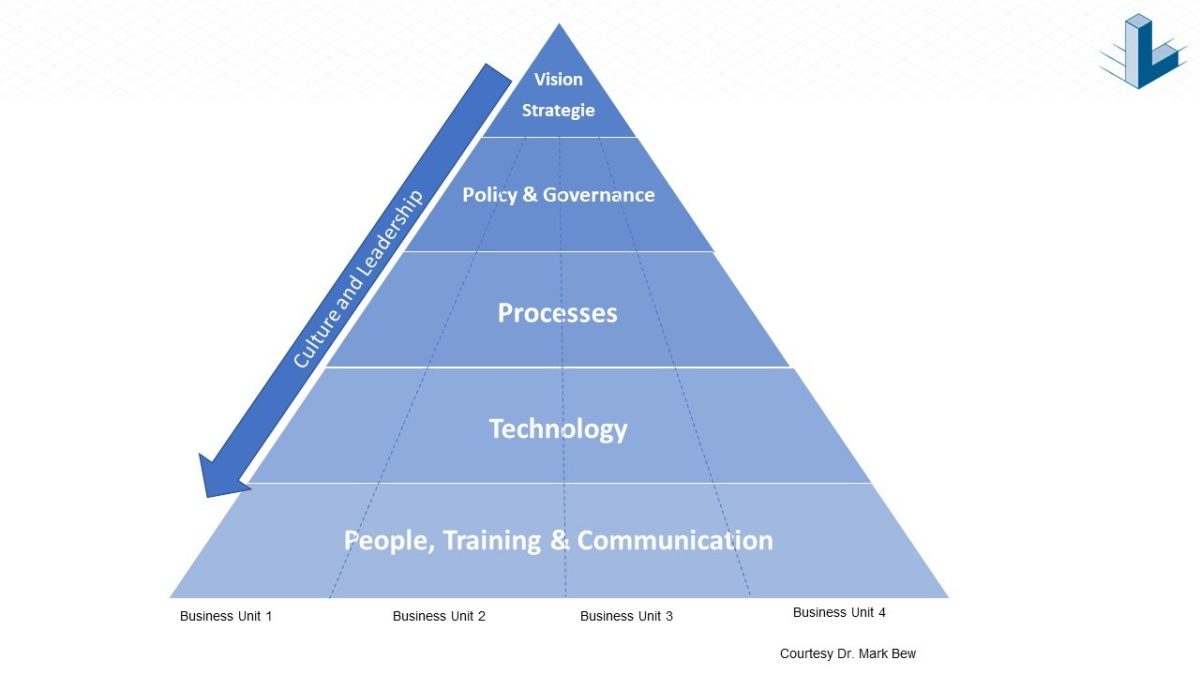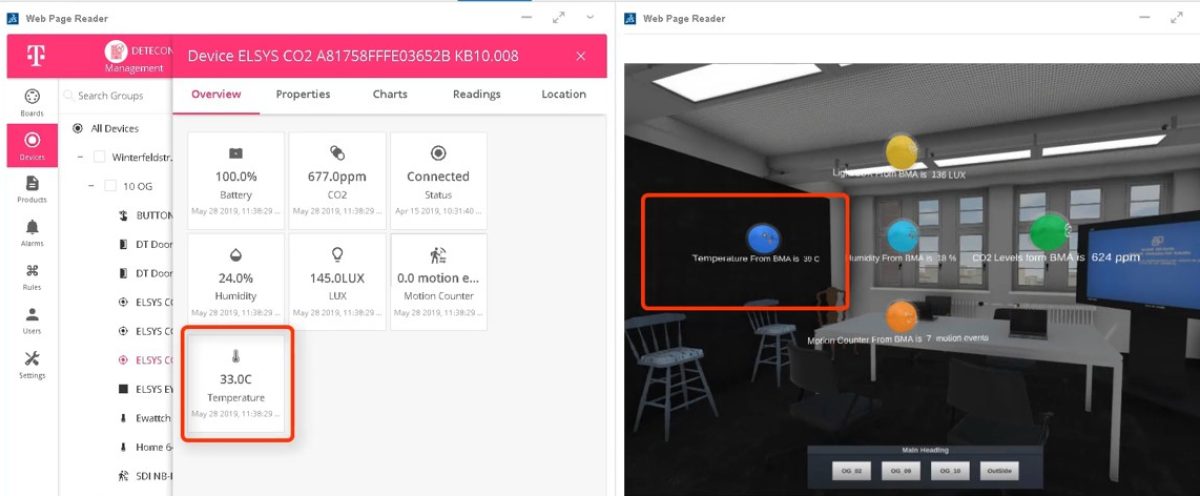
"Data are more like soil, not like oil" – Let´s talk about : How the added value of the digital twin grows through sharing!"
Welcome to the first INTERGEO Video Podcast 2022. The topics of digital twins and BIM in construction will play a central role at INTERGEO 2022 from October 18 to 20 in Essen.
INTERGEO TV host Denise Wenzel talks to Dr. Ilka May from the company Loclab about digital twins, practical applications and their added value by sharing.
Denise Wenzel, Intro: "Ilka, when it comes to digital twins, your name comes up in this context. For many, many years you have been a guest and expert at INTERGEO as a speaker, panel participant, but also as a solution provider in the context of the application and creation of digital twins at INTERGEO. So, many will know you in the context of BIM, Smart City and digital twins.
And for those who don't, here´s a brief introduction:
Ilka May holds a doctorate in geography,
in 2015, she was in charge of the development of the step-by-step plan "Digital Planning and Building" on behalf of the Ministry of Transport and Digital Infrastructure, and since 2018 she is playing a key role in accompanying the update of Deutsche Bahn's BIM strategy. Ilka is CEO of the company Loclab Consulting and specialised in creating 3D digital twins and bringing them into use."
Ilka, let´s start with a warm-up, by answering three questions in one sentence or less? OK?
YES, but let me very briefly say something for your understanding, please, may I?
We all imagine something under digital twin, but our understanding can be very far apart. What I personally, and of course what we do at LocLab, is 3D Digital Twins. So when I talk about DT now, I mean the LocLab understanding: structured 3D models that digitally represent a structure or a facility, in the existing state or in different future scenarios. So the structure of the 3D data model is crucial in our understanding. OK, good.
First Question: On a scale of “1- extremely unlikely” to “10 - with absolute certainty”:
How likely is it that you will make it into the history books as a "Digital Twin Pioneer"?
Personally 0-1, but LocLab as a Digital Twin Company we would like to have 10!
Second question: What are your core skills in relation to Digital Twins?
From feedback that we get from other people it is being able to explain the added value and interrelationships, e.g. with BIM, in a comprehensible and understandable way.
Third question: What fascinates you about them?
The variety of areas of application and the added value they can provide.
So it's the enormous potential for improvement that you see in the 3D Twins that pushes you!
Now, let´s go a little more into detail! In your pre-talk with my colleague, you inspired the title of today's podcast:
"Data are more like Soil. Not like oil! What do you mean by that?
I didn't come up with the saying, but I think it's apt. I heard it during my Smart City professional education programme taught by Prof Gu at Imperial College London. The logic is:
What do we associate with oil? A lot of people and organisations rely on it, and there is a lot of money to be made from it. This is also true for data.
BUT: Oil, as we know, is a finite resource. The more people use oil, the faster it runs out. Data is just the opposite - it keeps growing. The more people share their data, the greater the potential it creates.
An example: I love Google Maps. When I plan a trip, I no longer listen to the traffic radio every 30 minutes to know if there is a traffic jam and how long it will take me. Google knows that much more precisely. At least Google knows how many mobile phones are currently moving where and at what speed. If only one person shared this information with Google, or 100, then the value would be zero. But because millions of people or phones do it, it becomes a valuable service.
For similar reasons, many state surveys and city councils, not only in Germany, make their geodata and other data available free of charge.
So the value of data grows with its use! That makes sense.
But all too often we still talk about silo structures, the isolated availability of data, detached from other departments or company processes.
But the core of Digital Twins lies in THINKING processes together, doesn't it? Is the human being an obstacle in the success story of Digital Twins?
That sounds too harsh to me. If you look at organisations, every organisation has to set up and manage itself according to its business purpose and model. Let's think of it like a pyramid:

- At the top is the strategy, which describes the business purpose.
- Below that is the so-called governance, i.e. this is where the framework conditions for the implementation of the strategy are laid down.
- Below that are the processes, because we need them to comply with the governance and the strategic guidelines.
- Below that is the technology required to execute the processes, i.e. our tools and also our data.
- Where the pyramid is widest, there are the people who have to implement and master all of this.
Vertically, there are now the different business units or departments that have certain targets or have to take on responsibilities - and also bear risks. So we are always dealing with silos. The horizontal divisions ensure organisation-wide efficiency and uniformity and counteract the silos.
Now digitalisation is coming and turning all that upside down. The horizontal areas have to deal with more data, other data formats, other software tools and the conversion of previously analogue processes, for example. This cannot be done overnight. Changed processes have to ensure that the framework conditions still fit (keyword data protection, data security) for example. People need training, further education and communication to master all this. In my opinion, it is too short-sighted to say that people are holding back the Digital Twin. All levels of an organisation have to work together in a coordinated way.
Are Digital Twins with Artificial Intelligence in them, superior to human decision making?
When it comes to the lightning-fast analysis of numbers or facts, then certainly yes. But human decisions are much more than that – that very quickly leads us into an ethical debate.
Do you have examples?
Think of the famous example of autonomous driving, when the collision is inevitable and the only choice left is between the person with the pram and the one with the walker....
Perhaps we could put it this way: the 3D digital twin can support decision-making enormously because of the information that can be grasped quickly and intuitively by the human brain. So for example, a value in a dashboard indicates an alarm or an anomaly.

Now someone has to decide what to do. But all you see are long lists of numbers and values. In the 3D model I can see much more context. The people sensor shows that there are currently no people in the room. The other values are normal. I can now quickly go out of the room in the 3D model and see what is in the rooms next door and how many people are there - or whether there is critical technology there. Then I can make better decisions.
You create Digital Twins with Loclab. Can you give an example of why they are more like soil and less like oil, as the quote suggests?
For this reason, you are developing a platform to make data accessible. Is it enough to make digital twins accessible via platforms? Or don't you also need know-how in order to use them effectively? Can they be "read" without further ado?
That's right, we are working on a new business model, a platform. The idea was given to us by our clients, who wanted us to take over the maintenance and administration of the models for them and enable them to share the models with their service providers, partners and others. A platform is ideal for this.
We create access points and roles for different groups of people and objectives. If a person has the role of an asset or facility manager, they will very quickly be able to use the functionalities and the digital twins for their job. The principles are based on playful operation and learning. There are videos of very young children using ipads, for example.
Then there will be an area for developers. We want to give them as many open interfaces as possible so that they in turn can develop their business model on the back of the Digital Twin. So our approach follows the Spoil analogy: don't create hurdles, but share what you can, the more the better!
Dr. Ilka May, Loclab Consulting
Produced by: HINTE Marketing & Media
Host: Denise Wenzel